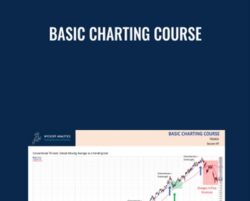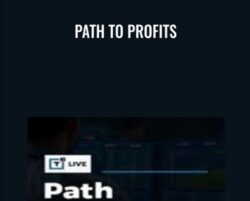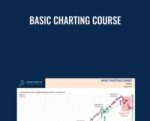What will be covered?This course presents a wealth of foundational chart-reading knowledge, encompassing both Technical Analysis (TA) and the Wyckoff Method. You will learn elemental to intermediate charting principles, including our personal interpretations of conventional (TA) concepts within a Wyckoff Method context. The Basic Course focuses on the essential analytical techniques that will allow you to make a seamless transition from TA to the Wyckoff Method!How will you benefit from these materials?This course will provide you with a clear understanding of:Fundamental concepts in Technical Analysis (TA)Core analytical principles of the Wyckoff MethodOur perspectives of the key differences and areas of complementarity between conventional TA and the Wyckoff MethodWhen you complete the Basic Course, you will be well prepared for the next steps on the path to mastery of the Wyckoff Method.Each of the videos has accompanying slides, which can be printed out to allow you to take notes on as you watch the presentations. You will have one full year from the date of purchase to view and review the videos!CURRICULUMTypes of Charts: Vertical (aka Bar), Candlestick, Point & Figure (P&F), Candlevolumes and visual explanations of each type, including appropriate usage contexts and benefitsVertical bar (+ volume bars) – Tape ReadingPoint-and-Figure – companion to vertical charts, horizontal counts, less price volatility (not time), tape reading, volumeCandlestick – Basic structure + visualizationsCandlevolume charts – Combining candlestick + volumeTime Frames: intraday, daily, weekly, monthlyTraditional timeframes and how they are best used. Campaigns (weekly + monthly), swing (daily), intraday (intraday + daily)Combining multiple timeframesPrice and volume patterns are fractal on different time framesThe Market as a Discounting Mechanism and a visual representation of campaigns actions conducted by the Composite Operator (CO)Technical Analysis reveals the Discounting Mechanism. Definition. Long-term trend initiation, with catalyst(s) appearing later on.The Composite Operator as a heuristic for institutional participationCyclicality vs the Price CycleTechnical Analysis Cyclicality. 3-5 year business cycleBusiness cycle corresponds with the market cycleWyckoff Price Cycle: Accumulation, Mark-up, Distribution, Mark-downTrends and trading ranges within Price CyclePrice Cycle sequence: Accumulation, Mark-up, Re-accumulation, Mark-up, Distribution, Mark-down, Re-distributionCyclicality of Price inside the channelDifferent time frames’ cyclicality and the Price CycleTrading Range: Support/Resistance, Breakouts, Failed Breakouts, Upthrusts (UT) and Springs/Shakeouts(SO) or Signs of Strength (SOS)/Signs of Weakness(SOW)Technical Analysis: Trading ranges explainedTechnical Analysis: Support and resistance definedTechnical Analysis: Breakouts and failed breakoutsWyckoff: Support and resistance definedWyckoff: UT and Spring/SO as failed breakouts + SOS/SOW as successful breakoutsTrends: Definition – Higher Highs(HH)/Higher Lows (HL). Logarithmic vs arithmetic scales. Moving averages (MA), Linear Regression Line (LRL)Technical Analysis: Trend Definition. HH/HL for uptrends and the reverse for downtrendsComparison of logarithmic vs arithmetic scalingTechnical Analysis: Trend defined by TA tools (MA, Linear Regression Line)Wyckoff: Also HH/HLTrends: Conventional and Reverse Trendlines. Break of trendlines/Change of Character (ChoCh)Throw-overs and Oversold/Overbought conditionsBreak of Trendline signal. TA vs Wyckoff CHoCHVisuals: Multiple examplesPrice formations: Technical Analysis PatternsReversal vs continuation patternsTrading ranges, including triangles, flags and pennants, wedgesTriangles of different kinds compared with Wyckoff’s Hinge or ApexHead & Shoulders, inverse patterns, double tops and bottoms,Parabolic, V-formations or spikesRounding top/bottom formationsWyckoff Price Formations: AccumulationAccumulation Events: Selling climaxes, secondary tests, springs, and othersAccumulation Phases. Predictable sequences of Accumulation eventsWyckoff Price Formations: DistributionDistribution Events. Buying climaxes, secondary tests, UTs, and othersDistribution Phases. Predictable sequences of Distribution eventsBasic Technical Analysis definitionsVolume leads price.Volume confirmation of price, with examples. Volume as evidence of Demand or Supply (or both).Volume divergence from price (non-confirmation), with examples.Wyckoff Laws: Supply and DemandWyckoff’s Law of Supply and Demand drives the Price Cycle. Example: Exhaustion of Supply in a trading range leads to an uptrend.Case study: Price Cycle resulting from changes in Supply and DemandWyckoff Laws: Effort vs. ResultEffort vs. Results law. Definition.Result in line with EffortNon-confirmation. Result not in line with Effort.Wyckoff Comparative analysisOriginal Wyckoff Course comparative visualsBasic construction and interpretationSignificant highs and lows + slopeIssues with comparative analysisRelative Strength (RS) analysisDefinition and basic constructionBasic interpretationHeat Map ranking based on changes in RSTechnical Analysis Indicators useful to Wyckoff Traders. Rate of Change (ROC), Relative Strength Index, Stochastics, and On Balance Volume (OBV)Volume: OBVMomentum: ROCBasic Technical Analysis P&F concepts (vertical measurements)One of the oldest charting methodsP&F breakout patternsVertical price objectivesWyckoff P&F Basics (horizontal counts)Wyckoff’s Law of Cause and EffectBasic horizontal counting guidelines to determine price targets1-box (swing) vs 3-box reversal (campaign)Intraday P&F counts examplesWhat’s next? Complimentary Wyckoff Trading Course 1st session + Wyckoff Market DiscussionHow should you study this material?Step 1: Watch the videos. You can binge-watch them OR you can review one session per day.Step 2: Review the additional materials provided on the last slide of each presentation. These include “Wyckoff Power Charting” blogs, Chartschool articles and Youtube videos.Our advice: Conclude each session – and the supplementary materials – with a sense of mastery before proceeding to the next. This approach will help you attain the deep knowledge needed to successfully apply these concepts to your trading.What comes next?The final video in this course includes links to complimentary sessions of the Wyckoff Trading Course (WTC) and our Wyckoff Market Discussion (WMD). The WTC gives traders the tools to analyze charts and execute trades using the Wyckoff Method. In the WMD, we analyze current markets – major U.S. indexes, sectors, industry groups and individual stocks – from a Wyckoff Method perspective, and demonstrate the utility of this approach in anticipating the future direction of any freely traded market.Get Basic Charting Course – Bruce Fraser & Roman Bogomazov, Only Price $47Tag: Basic Charting Course – Bruce Fraser & Roman Bogomazov Review. Basic Charting Course – Bruce Fraser & Roman Bogomazov download. Basic Charting Course – Bruce Fraser & Roman Bogomazov discount.basic charting techniques basic charting patterns basic charting in r basic dental charting
Basic Charting Course – Bruce Fraser & Roman Bogomazov
₹7,138.00






